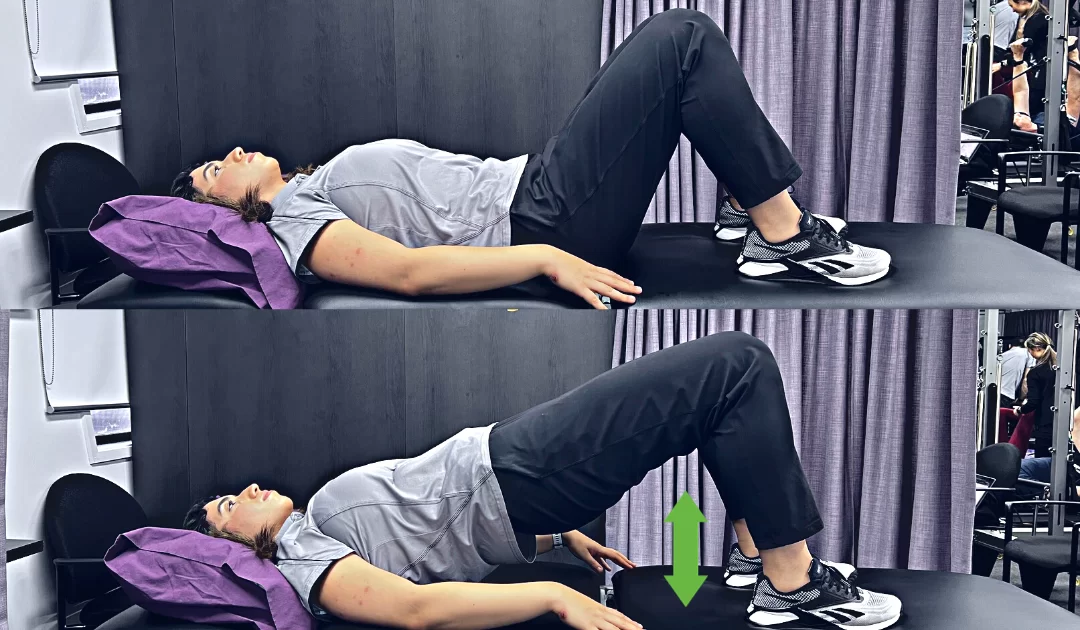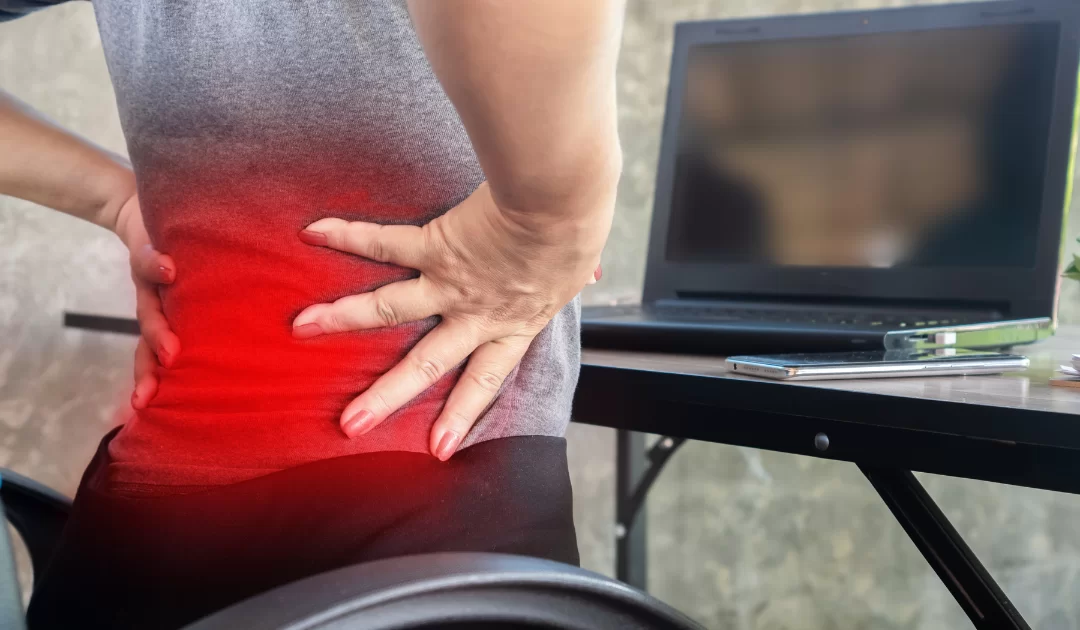Lower back pain (LBP) is the most common musculoskeletal injury, with 70-90% of the population experiencing LBP at some point in their life (de Luca et al., 2019). Early diagnosis and management is vital, as up to 30% of episodes can become chronic without the appropriate intervention (Casinao et al., 2022). However, targeted physiotherapy can help improve symptoms, function and quality of life for people struggling with both acute and chronic lower back pain.
What causes low back pain?
Mechanical causes are the most common and account for greater than 90% of cases:
- Muscle/Joint Overload: Overexertion, improper lifting techniques, or sudden movements can lead to overload in the lower back. These injuries can result in pain and discomfort and are the most common cause of back pain.
- Disc Problems: Intervertebral discs act as cushions between the vertebrae. Disc herniation, bulging discs, or degenerative disc disease can occur due to age-related wear and tear or trauma, causing compression or irritation of nearby nerves.
- Spinal Abnormalities: Structural abnormalities in the spine, such as spinal stenosis (narrowing of the spinal canal), spondylolisthesis (slippage of one vertebra over another), or scoliosis (abnormal curvature of the spine), can contribute to lower back pain.
Non-Mechanical causes may include inflammatory conditions, infections and other medical conditions that can manifest as lower back pain. It is important to have a physiotherapist or medical assessment to rule out any ‘red flag’ pathologies, and if required they may refer you for diagnostic imaging or direct you to the appropriate health care professional.
Causes/Risk factors
- Sedentary behaviours—long periods of sitting (office population) or lying down (long hospital stay), obesity, sleep disruption, smoking, alcohol
- Sudden increases in physical activity and load
- Increased psychosocial stress & anxiety
- Repetitive loading of the spine – particularly with occupation
- Poor lifting techniques, biomechanics and poor muscle recruitment patterns
Assessment
Physiotherapy is important as a first line intervention for LBP. During an initial consultation, a physiotherapist will conduct a thorough subjective & physical assessment to find the cause of symptoms and determine whether further investigation such as an X-ray, CT or MRI scan is required. Current guidelines for low back pain recommend against routine use of these investigations in the absence of red flags in non-specific low back pain (LBP) of less than 12 weeks duration, as this does not change the management. (Chou et al., 2020).
Our physiotherapists will also investigate the underlying biomechanical causes of low back pain assessing gait, posture, lumbo-pelvic-hip control, muscle activation throughout the trunk and lower limb, and analysing movement patterns.
As a part of our examination our physiotherapists will determine individualised functional goals for each patient. This ensures that we tailor our treatment to the individual, helping guide our patients to a safe return to their daily tasks, sport, hobbies and work situations. Our aim is to also help minimise recurrent back issues or secondary injuries that result from compensatory movement patterns.

Treatment
Understanding the patients’ goals and marrying this up with the subjective and objective physio examination prove integral in determining a treatment plan for a patient. Research into lower back pain has consistently shown that conservative management, incorporating the key elements of education, advice, activity modification, manual therapy, and a guided progressive exercise program to be best practice treatment (Owen et al., 2020).
An exercise program needs to address the issues noted on the individual’s examination, so there is no cookie cutter approach when treating lower back pain. With this in mind though, a variety of exercise programs have been shown effective in the research. Shamsi et al. (2015) demonstrate improvements in both pain and disability with either core specific or general low back exercise programs. Brukner & Khan (2018) supports the use of manual therapy in relieving symptoms, improving segmental mobility, and relaxing muscle spasm. O’Neil et al., (2020) supports the use of Pilates to improve general health, pain levels, sport’s specific function, flexibility, and proprioception in individuals with chronic low back pain. Lin et al., (2016) also reported that Pilates had significant improvement in pain relief and functional capacity, comparable to other lumbopelvic stabilization exercises and had an analgesic effect enhancing functional capacity, whilst Gorden et al. (2016) concluded that a multi-factorial approach of strength, flexibility, stability, and improvements in aerobic fitness to be most beneficial in helping people with back pain. Each of these approaches are considered in our clinic and then applied as deemed appropriate for the specific patient.
The research certainly supports that LBP can be significantly improved with holistic physiotherapy care, particularly when rehabilitation is designed individually for the patient, addressing their history and objective findings, their activity levels and their goals.
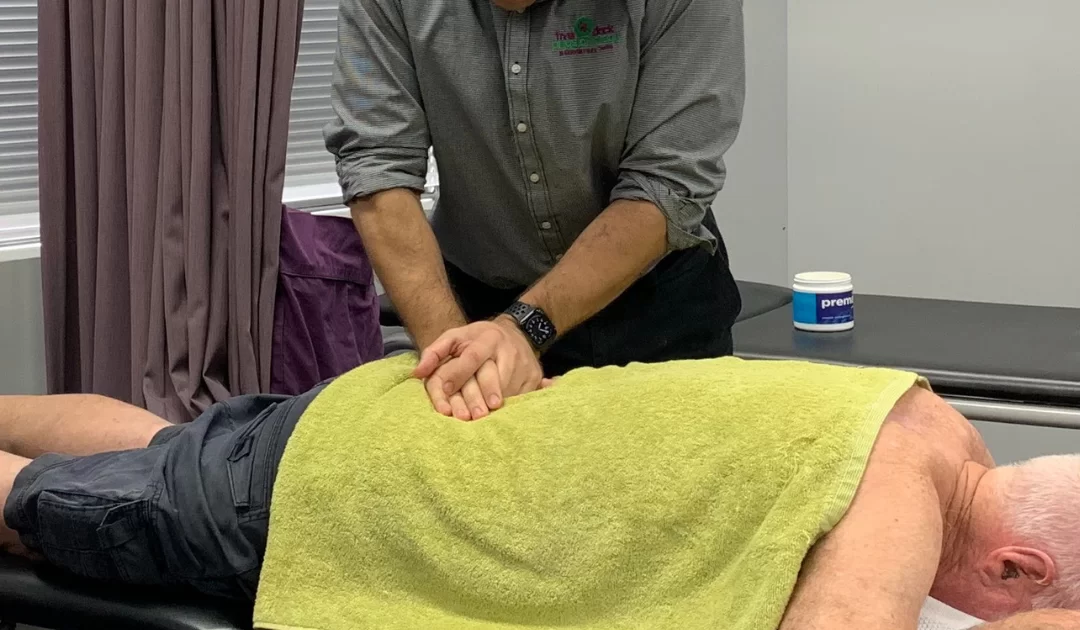
Exercises to help Relieve Lower Back Pain
Fire Hydrant on Reformer
Gluteus Medius Retraining.
Using the Pilates reformer start in 4-point kneeling, with your hands on the shoulder rests and knees on the carriage. Place one strap through your leg resting at the thigh above the knee. Make sure the tension on the strap remains even. Keeping your hips in neutral, lift one knee out to the side, ensuring your pelvis doesn’t rotate. This engages your gluteus medius. Bring the knee back down and repeat.
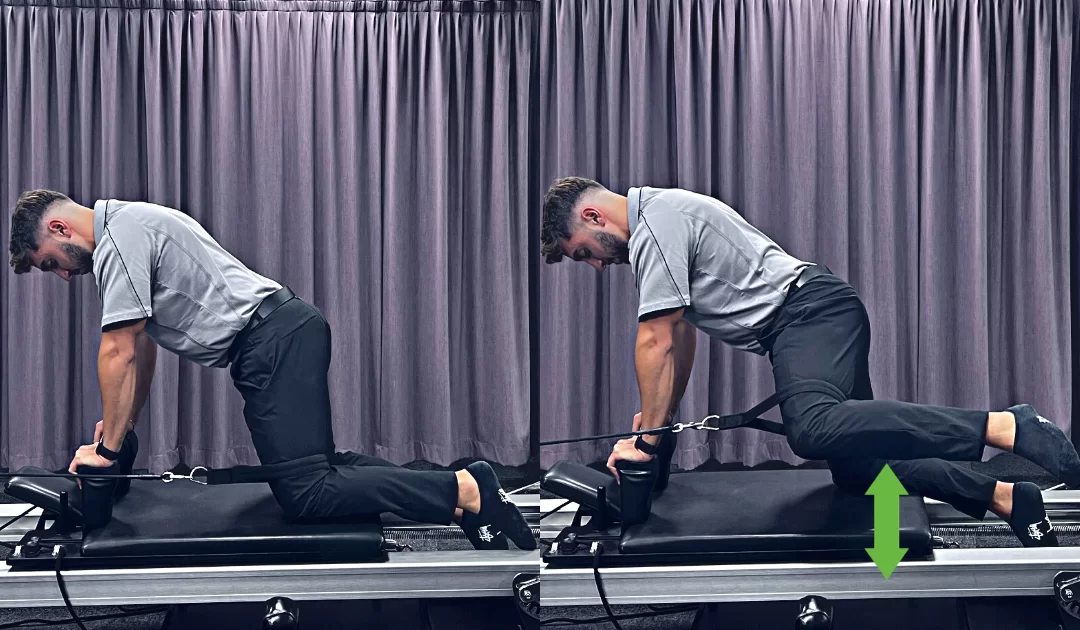
Lumbar Rotation
Lumbar Spine and Gluteal Stretch
Lying on your back, lift one knee up to 90 degrees, with the other leg remaining straight. With your opposite hand pull your knee across your body while trying to keep your shoulders on the floor or bed. This will stretch out your lower back.
Hold for 30 seconds and repeat on the opposite side.
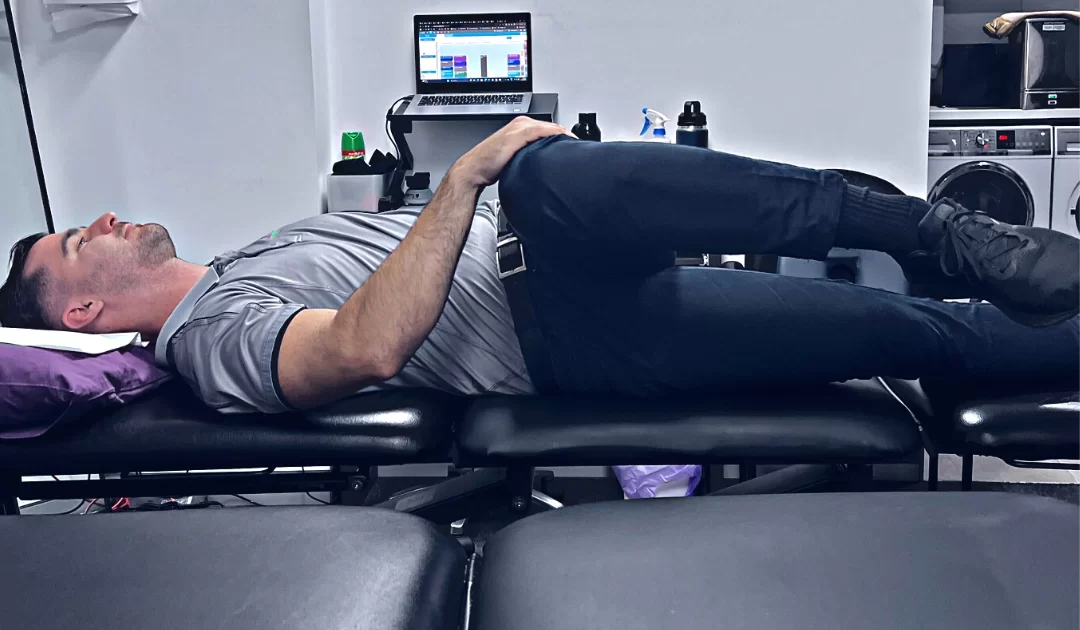
Segmental Bridge
Core and Posterior Chain Retraining
Start by lying on your back with your feet planted on the ground or bed. Your knees should be bent back as far as they go. Start by tilting your pelvis backward engaging your core muscles and then slowly, continue to roll your hips further up, effectively lifting your bottom off the ground one vertebrae at a time until you are in a bridge position. Keeping your pelvis tilted, slowly unroll one vertebrae at a time until you reach the starting position. Repeat for reps.
